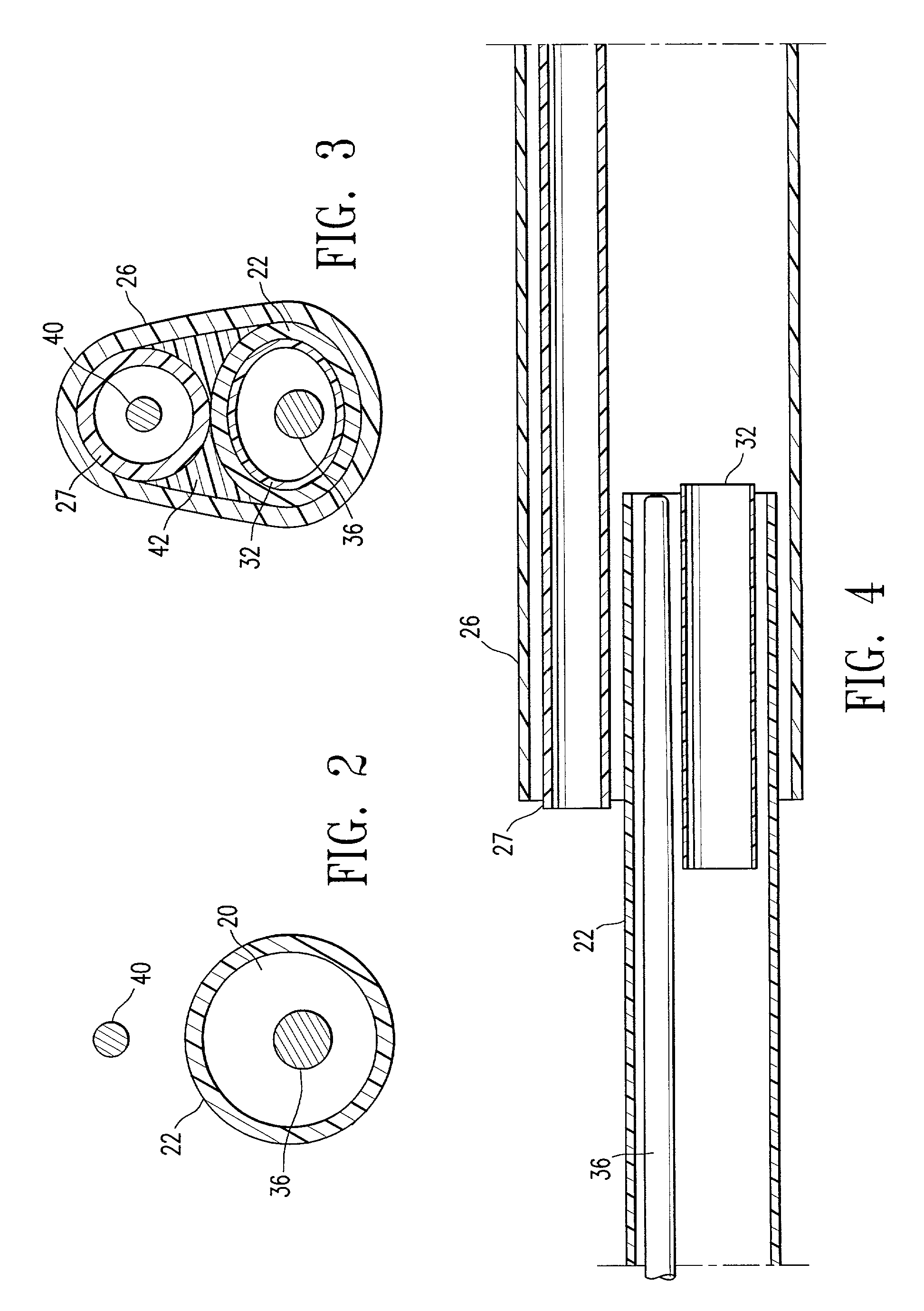Catheter shaft junction having a polymeric reinforcing member with a high glass transition temperature
a polymer reinforcement member and glass transition technology, applied in the field of catheters, can solve the problems of forming flexible junctions, kink resistance and ruggedness, prior art designs have suffered from various drawbacks, etc., and achieves the effects of low profile, suitable stiffness transition, and excellent dimension stability
- Summary
- Abstract
- Description
- Claims
- Application Information
AI Technical Summary
Benefits of technology
Problems solved by technology
Method used
Image
Examples
Embodiment Construction
[0027]FIG. 1 illustrates rapid exchange type balloon catheter 10 embodying features of the invention. Catheter 10 generally comprises an elongated catheter shaft 11 having a proximal end 12, a distal end 13, a proximal shaft section 18 and a distal shaft section 19 at the distal end of the proximal shaft section, and an inflatable balloon 14 on the distal shaft section. The shaft 11 has an inflation lumen 20, and a guidewire receiving lumen 21. The proximal shaft section 18 comprises a proximal tubular member 22 defining a proximal portion of the inflation lumen 20, and having a proximal end 23, a distal end 24, and a distal portion 25. In the embodiment illustrated in FIG. 1, the distal end of the proximal tubular member 22 tapers distally to a smaller transverse dimension. The distal shaft section 19 comprises an outer tubular member 26 defining a distal portion of the inflation lumen 20, and an inner tubular member 27 defining the guidewire lumen 21 in fluid communication with a ...
PUM
| Property | Measurement | Unit |
|---|---|---|
| glass transition temperature | aaaaa | aaaaa |
| length | aaaaa | aaaaa |
| wall thickness | aaaaa | aaaaa |
Abstract
Description
Claims
Application Information
 Login to View More
Login to View More - R&D
- Intellectual Property
- Life Sciences
- Materials
- Tech Scout
- Unparalleled Data Quality
- Higher Quality Content
- 60% Fewer Hallucinations
Browse by: Latest US Patents, China's latest patents, Technical Efficacy Thesaurus, Application Domain, Technology Topic, Popular Technical Reports.
© 2025 PatSnap. All rights reserved.Legal|Privacy policy|Modern Slavery Act Transparency Statement|Sitemap|About US| Contact US: help@patsnap.com



